ساختمان خیابان هدایت
استودیو طرح مانا (محمدی، شکرالهی و همکاران)
فینالیست سومین دوره جایزه شایستگی معمار ایرانی (۱۳۹۹)
موقعیت: شیراز، ایران
تاریخ: ۱۳۹۳
مساحت: ۱۲۰۰ مترمربع
وضعیت: ساختهشده
کارفرما: آقای مصطفایی و شرکا
طراحی و اجرا: پریسا و حمیدرضا محمدی، لیلا و علی شکرالهی
سازه: یحیی فیلی، مجید شکرالهی
تاسیسات: زهرا شکرالهی
ساختمان خیابان هدایت در زمینی به مساحت ۲۹۰ مترمربع و با زیربنای ۱۲۰۰ مترمربع، در مرکز تجاری و اداری شهر شیراز، در هفت طبقه ساخته شده است. این بنا شامل دو طبقه زیرزمین، با کاربری پارکینگ، طبقات همکف و اول با کاربری تجاری، و طبقات دوم تا چهارم با کاربری اداری است. در هر طبقه از سه طبقه فوقانی، دو واحد اداری (دفتر کار) ۸۰ متری طراحی شده که بدینترتیب، طبقات اداری شامل شش واحد دفتر کار است. طبقات همکف و اول نیز مجموعا شامل یک واحد تجاری است که با یک پله داخلی به یکدیگر متصل میشوند. دسترسی زیرزمین اول با رمپ مربوط به پارکینگهای تجاری و دسترسی زیرزمین دوم نیز از طریق کارلیفت مربوط به پارکینگ واحدهای اداری میسر میشود.
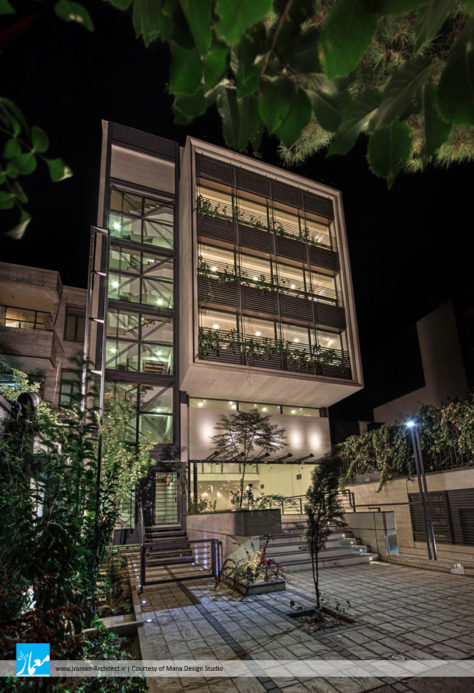
در ابتدا، استفاده از یک ریتم منظم برای کاهش تشدید ناهمگونی بصری سیمای ساختمانهای اطراف شکل گرفت که در المانهای معماری بنا، معنایی تصویری به خود میگیرند و به عبارتی، تکرار منظم و توالی و تغییر و حرکت عناصر، ضربآهنگی بصری را به وجود میآورد. در وهله بعد، استفاده از فضای سبز در کنار فضاهای داخلی و گسترش آن به نمای ساختمان، از یکسو، سبب ارتقاء کیفیت فضای دفاتر کار و بالا بردن روحیه افراد و کارکنان میشود و از دیگرسو، با توجه به خشکی اقلیم محیط، باعث تعدیل هوا و لطافت آن، برای جلوگیری از ایجاد شوکهای حرارتی خاص اقلیمهای خشک میشود.
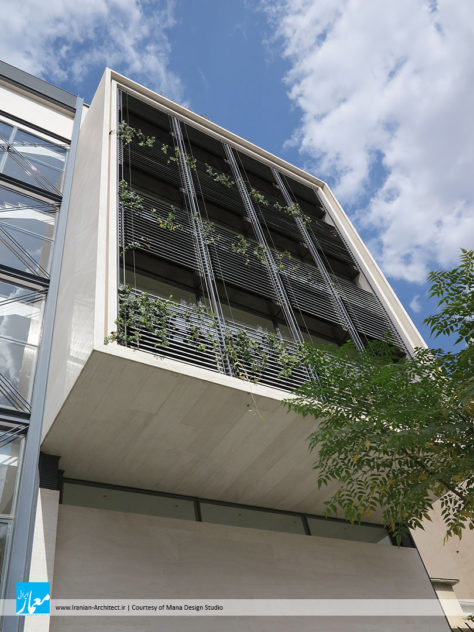
تابش خورشیدی با وجود ارزش بهسزایش، برای محیط درونی ساختمان دارای معایبی است. تابشی که مستقیما وارد فضای داخلی میشود، به طور کلی مطلوب نیست، زیرا میتواند باعث ایجاد حساسیت به نور و گرمای بیش از حد شود. در این پروژه، هدف این بود که با مدلسازی نرمافزاری نور روز و شدت سایه به وسیله اکوتکت، بتوان تا جای ممکن، با ابزارهای غیرفعال طراحی اقلیمی، شامل شکل و هندسه عناصر ساختمانی، مزایای تابش را به حداکثر و معایب آن را به حداقل رساند. در نتیجه، جداره شفاف کارشده در نمای جنوبی واحدهای اداری با لایهای از صفحات تابشگیر به گونهای پوشانده شده تا مطابق تحلیلها، نور روز دریافتی توسط فضاهای جنوبی مدیریت و علاوه بر این، ضمن حفظ شفافیت و دید، مانع از ورود تابشهای غیرمفید در ساعات میانی روزهای گرم شود.
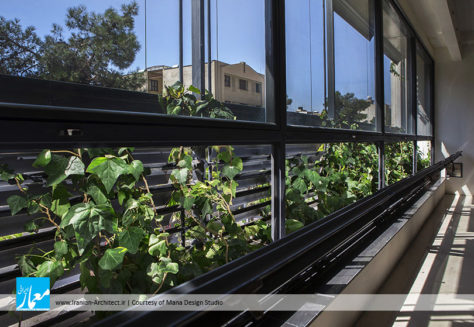
برای سازه بنا، سیستم تیر و ستون فولادی طراحی شده است که در جهت عرض، با قاب خمشی و دیوار برشی و در جهت طولی، با قاب ساده بادبندی مهاربندی شده است. برای سیستم سرمایش و گرمایش نیز در واحد تجاری از فنکویل و چیلر استفاده شده و برای بهرهگیری از انرژی خورشیدی، استفاده از پکیج کاندنسینگ سولار با کلکتور و پمپ خورشیدی پیشنهاد شده است.
Hedayat Street Building
Mana Design Studio (Mohammadi, Shokrollahi & Partners)
Finalist of Iranian Architect Merit Award 2020
Location: Shiraz, Iran
Date: 2015
Area: 1,200 sqm
Status: Completed
Client: Mr. Mostafayi & Partners
Design Team: Parisa & Hamidreza Mohammadi, Leila & Ali Shokrollahi
Structure: Yahya Fili, Majid Shokrollahi
Mechanical Consultant: Zahra Shokrollahi
Hedayat Street building in an area of 290 sqm and a building area of 1200 sqm, was designed in the commercial and administrative center of Shiraz city in Iran, on seven floors. The building consists of two basement floors, for parking usage, ground and first floors for commercial and second, third and fourth floors for office usage. On each floor of the three upper floors, two office units with 80 sqm area was designed, so that office floors consists of six units. Ground and first floor consists of one commercial unit which is connected by an internal staircase. The first basement access is possible via ramp of commercial units and the second basement access is possible via car lift of office units.
At first, using a regular rhythm to reduce the visual heterogeneity of surrounding buildings, was formed that in the architectural elements of building take a visual meaning. In other words, the regular repeating, sequentially shifting, change and moving elements, creates visual rhythm. In next step, the use of green space in the the interior spaces and its extension to the building facade, on one hand, cause improve the quality of office space and raise spirit of individuals and employees’ and on the other hand, due to dry climate of environment, lead to adjustment of air and delicacy to avoid specific thermal shock of dry climate.
Despite the value of solar radiation for indoor environments, it has some flaws. The radiation that directly enter the interior space is generally not desirable, because it can cause sensitivity to light and excessive heat. In this project, the goal was to modeling daylight and shadow intensity with Ecotect Software and used passive design tools including shape and geometry of the structural elements, so that radiation advantages put to maximum and disadvantages can be minimized. As a result, transparent southern facade of office units covered with a layer of shader plates in a way that according to analysis, daylight received by south spaces can be managed. In addition, while maintaining transparency and visibility prevents the useless radiation, during the days warm up.
The structural system is designed with steel beams and columns. In the width direction is braced with the moment frames and shear walls and in the longitudinal direction is braced with a simple frame. For heating and cooling system, fan coils and chillers used in commercial units and to take advantage of solar energy, using solar condensing package with collectors and solar pump is proposed.

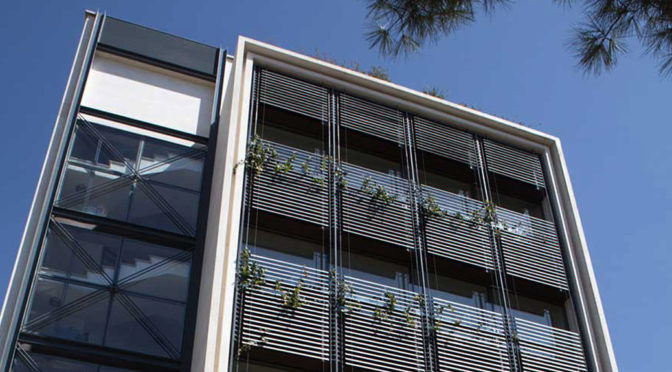
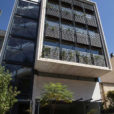
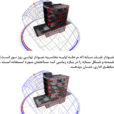
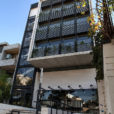
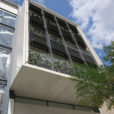
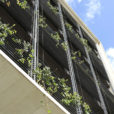
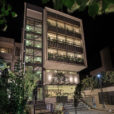
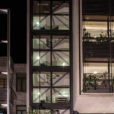
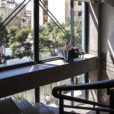
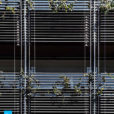
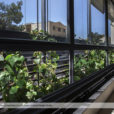
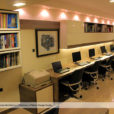
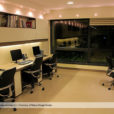
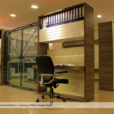
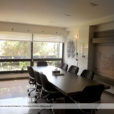
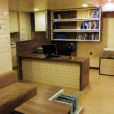
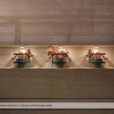
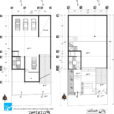
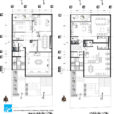
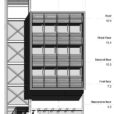
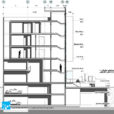
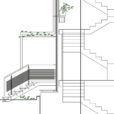
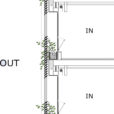
سلام
ممنون بابت اطلاعات مفیدی که قرار داده اید